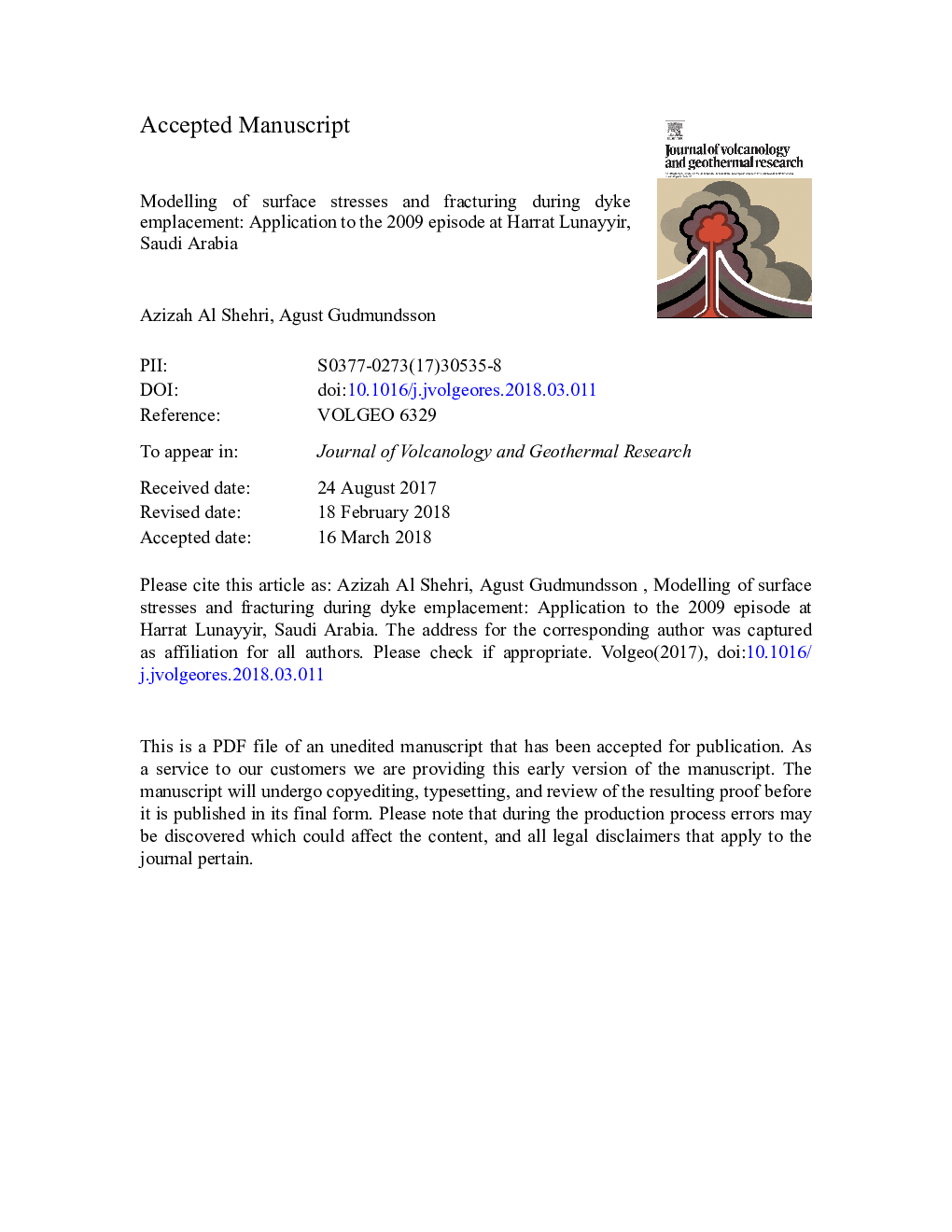| کد مقاله | کد نشریه | سال انتشار | مقاله انگلیسی | نسخه تمام متن |
|---|---|---|---|---|
| 8911323 | 1638267 | 2018 | 91 صفحه PDF | دانلود رایگان |
عنوان انگلیسی مقاله ISI
Modelling of surface stresses and fracturing during dyke emplacement: Application to the 2009 episode at Harrat Lunayyir, Saudi Arabia
ترجمه فارسی عنوان
مدل سازی تنش های سطحی و شکسته شدن در هنگام قرار دادن دایک: کاربرد در سال 2009 در هاررت لوینیر، عربستان سعودی
دانلود مقاله + سفارش ترجمه
دانلود مقاله ISI انگلیسی
رایگان برای ایرانیان
کلمات کلیدی
موضوعات مرتبط
مهندسی و علوم پایه
علوم زمین و سیارات
ژئوشیمی و پترولوژی
چکیده انگلیسی
Correct interpretation of surface stresses and deformation or displacement during volcanotectonic episodes is of fundamental importance for hazard assessment and dyke-path forecasting. Here we present new general numerical models on the local stresses induced by arrested dykes. In the models, the crustal segments hosting the dyke vary greatly in mechanical properties, from uniform or non-layered (elastic half-spaces) to highly anisotropic (layers with strong contrast in Young's modulus). The shallow parts of active volcanoes and volcanic zones are normally highly anisotropic and some with open contacts. The numerical results show that, for a given surface deformation, non-layered (half-space) models underestimate the dyke overpressure/thickness needed and overestimate the likely depth to the tip of the dyke. Also, as the mechanical contrast between the layers increases, so does the stress dissipation and associated reduction in surface stresses (and associated fracturing). In the absence of open contacts, the distance between the two dyke-induced tensile and shear stress peaks (and fractures, if any) at the surface is roughly twice the depth to the tip of the dyke. The width of a graben, if it forms, should therefore be roughly twice the depth to the tip of the associated arrested dyke. When applied to the 2009 episode at Harrat Lunayyir, the main results are as follows. The entire 3-7Â km wide fracture zone/graben formed during the episode is far too wide to have been generated by induced stresses of a single, arrested dyke. The eastern part of the zone/graben may have been generated by the inferred, arrested dyke, but the western zone primarily by regional extensional loading. The dyke tip was arrested at only a few hundred metres below the surface, the estimated thickness of the uppermost part of the dyke being between about 6 and 12Â m. For the inferred dyke length (strike dimension) of about 14Â km, this yields a dyke length/thickness ratio between 2400 and 1200, similar to commonly measured ratios of regional dykes in the field.
ناشر
Database: Elsevier - ScienceDirect (ساینس دایرکت)
Journal: Journal of Volcanology and Geothermal Research - Volume 356, 1 May 2018, Pages 278-303
Journal: Journal of Volcanology and Geothermal Research - Volume 356, 1 May 2018, Pages 278-303
نویسندگان
Azizah Al Shehri, Agust Gudmundsson,
